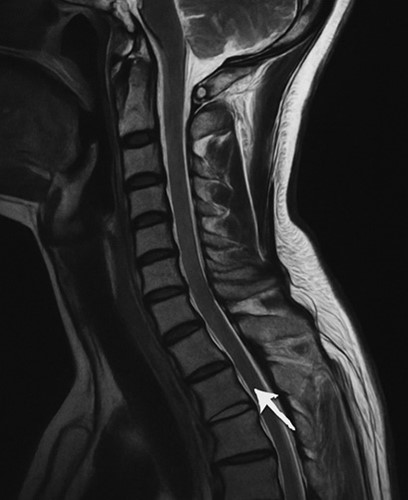
Spinal cord injuries (SCIs) are among the most devastating physical traumas a person can endure. Often the result of serious accidents, these injuries can lead to a lifetime of pain, disability, and the need for round-the-clock medical care. For victims and their families, the challenges extend far beyond the initial recovery—impacting their physical, emotional, and financial wellbeing for years to come. Understanding the medical complexities and legal rights related to spinal cord injuries is essential to pursuing justice and rebuilding one’s life after a catastrophic accident.
What Is a Spinal Cord Injury?
A spinal cord injury occurs when there is damage to the spinal cord or the nerves at the end of the spinal canal. This damage can result in temporary or permanent changes in strength, sensation, and other bodily functions below the site of the injury. SCIs are typically classified as either complete or incomplete:
- Complete Injury: Total loss of motor function and sensation below the injury site.
- Incomplete Injury: Partial preservation of motor or sensory function below the injury site.
The severity of an SCI depends largely on the location of the injury along the spinal cord. Injuries to the cervical spine (neck region) are generally the most serious and can result in tetraplegia or quadriplegia.
Common Causes of Spinal Cord Injuries
Spinal cord injuries can result from a variety of traumatic events, including:
- Motor Vehicle Accidents: Car, truck, and motorcycle accidents are the leading causes of SCIs.
- Falls: Particularly common among elderly individuals or those in unsafe workplaces.
- Acts of Violence: Gunshot wounds, stabbings, or physical assaults.
- Sports Injuries: High-impact sports like football, diving, or gymnastics.
- Medical Malpractice: Errors during spinal surgeries or anesthesia administration.
Life After a Spinal Cord Injury
For many SCI survivors, life is forever changed. The consequences of such an injury extend well beyond physical impairment. Victims may experience:
- Chronic pain or discomfort
- Inability to return to work or participate in previous activities
- Dependency on caregivers or assistive devices
- Emotional trauma and mental health challenges, such as depression or anxiety
- Mounting medical bills and rehabilitation expenses
Rehabilitation is often a long and demanding process, involving physical therapy, occupational therapy, counseling, and sometimes, re-learning how to perform basic daily tasks.
Legal Options for SCI Victims
When a spinal cord injury is caused by another party’s negligence—such as a reckless driver, a careless property owner, or a negligent healthcare provider—the victim has the right to pursue legal action. A personal injury lawsuit can help victims recover compensation for:
- Current and future medical expenses
- Lost wages and reduced earning capacity
- Pain and suffering
- Home modifications and assistive technology
- Emotional distress and loss of enjoyment of life
An experienced personal injury attorney will conduct a thorough investigation to identify liable parties, gather medical and expert evidence, and negotiate aggressively on behalf of the victim.
If you or someone you love has suffered a spinal cord injury due to negligence, don’t navigate the legal process alone. Contact Buckeye Accident Attorneys to schedule a free consultation and take the first step toward justice and recovery.
Ohio Highways and the Rise of Commercial Truck Crashes
Why Truck Accidents Are Becoming More Common — and More Dangerous Ohio’s highways — from I-71 and I-77 to I-80 and I-90 — serve as major arteries for commercial trucking
How Federal Regulations Impact Your Truck Accident Lawsuit
Understanding the Rules That Govern the Trucking Industry When a semi-truck causes a serious crash, most victims don’t realize that the trucking company’s liability extends far beyond the driver’s actions.
Filing a Claim After a Catastrophic Medical Mistake
When “Human Error” Has Life-Altering Consequences Catastrophic medical mistakes can devastate patients and families. From amputations caused by surgical errors to brain injuries from oxygen loss, these events often result
How Hospitals Fail Patients in High-Risk Situations
When Every Second Counts, Negligence Isn’t an Option Hospitals are meant to be places of healing and safety, especially for patients in high-risk situations — such as those undergoing emergency
Heart Disease Misdiagnosis: When Doctors Fail to Act
The Silent Killer That Doctors Overlook Heart disease remains the leading cause of death in the United States, and early detection is often the key to survival. Yet, thousands of
Cardiology Errors That Lead to Catastrophic Consequences
When the Heart Is Mishandled: The Hidden Dangers of Cardiology Negligence Cardiology is one of the most critical areas of medicine—where every second and every decision can mean the difference
The Link Between Oxygen Deprivation and Medical Negligence
Understanding Oxygen Deprivation and Its Consequences Oxygen deprivation—also known as hypoxia or anoxia—occurs when the brain or other vital organs do not receive enough oxygen to function properly. In medical
Filing a Brain Injury Lawsuit Against an Ohio Hospital
When a Medical Error Leads to Brain Damage Brain injuries caused by hospital negligence are among the most serious and heartbreaking medical malpractice cases. Unlike accidents outside a medical setting,
Slip and Fall Injuries on a Moving Bus—Can You File a Claim?
Understanding Slip and Fall Injuries on Buses Public buses, school buses, and private shuttles are all considered “common carriers,” which means they owe passengers a heightened duty of care. Yet
How to File a Claim for a Child Injured in a Bus Accident
When a Child Is Hurt on a Bus Parents trust buses—school buses, daycare vans, and public transit—to safely transport their children. But when a child is injured in a bus
